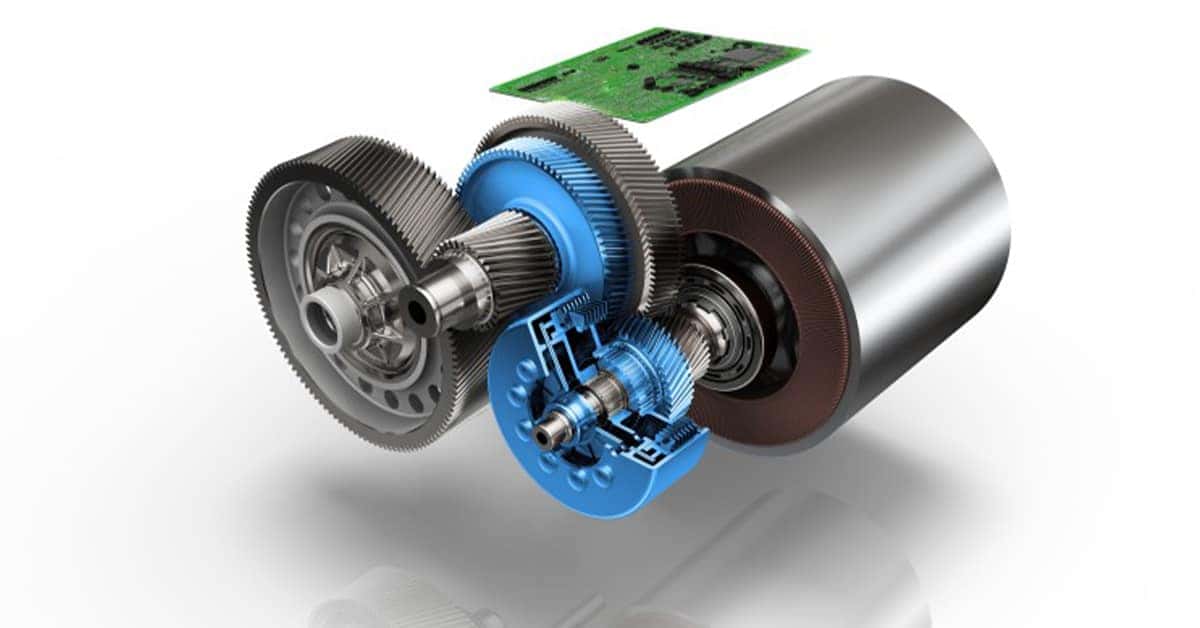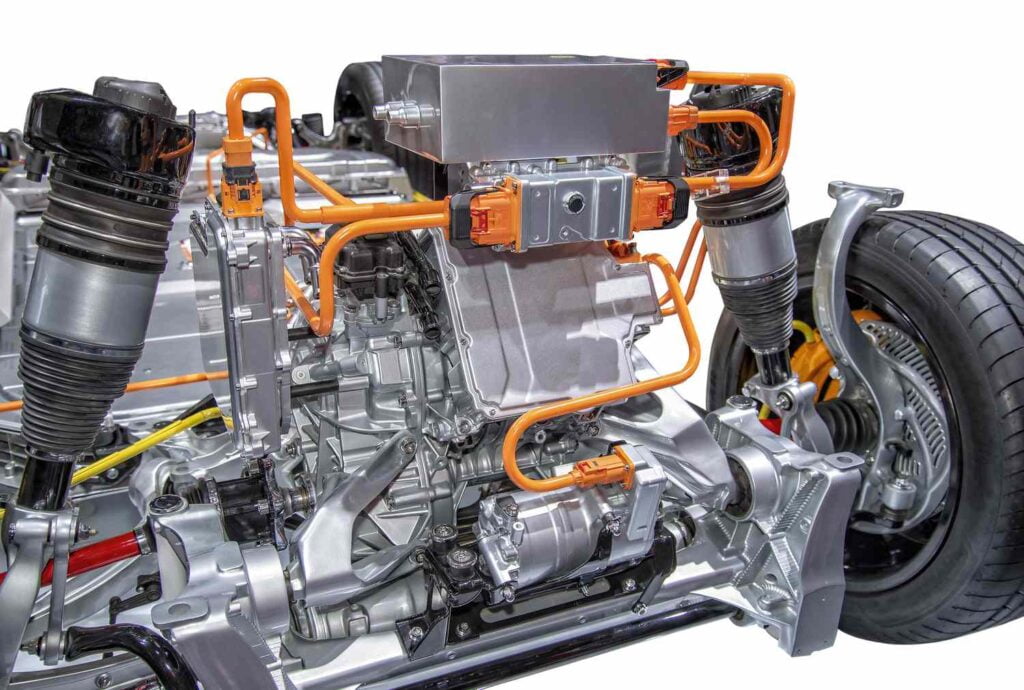- Jeep Cherokee Push Button Start Not Working: Troubleshooting Tips To Get You Back on the Road Fast! - 11 November 2023
- Haval H2 Problems: The Complete Troubleshooting Guide - 11 November 2023
- Gwm P Series Problems: Troubleshooting Guide for Common Issues - 11 November 2023
Electric cars do have transmissions, but they work differently than those in traditional gasoline-powered vehicles. Most electric cars use a single-speed transmission that directly distributes power from the motor to the wheels, without the need for multiple gears.
This is possible because electric motors can generate instant torque, eliminating the need for gear shifting. Unlike internal combustion engines, which rely on various gear ratios for power output, electric motors deliver peak power immediately. Therefore, electric cars are able to operate efficiently with just a single-speed transmission.
This unique transmission system is one of the many differences between electric cars and their gasoline-powered counterparts.
Understanding The Unique Transmission System In Electric Vehicles
Electric car transmission work? Are electric cars equipped with transmissions? The answer is yes, but they operate differently than internal combustion engines. Most electric vehicles use a single-speed transmission to distribute power directly from the motor to the wheels, optimizing efficiency and torque.
Unlike traditional cars, electric motors can produce instant torque, eliminating the need for gear changes.
Introduction To Electric Vehicle Transmissions
Understanding the unique transmission system in electric vehicles is crucial to grasp the inner workings of these advanced machines. Unlike traditional internal combustion engine cars, electric vehicles (EVs) employ a different transmission system to propel themselves forward. In this section, we will delve into the intricacies of electric car transmissions and explore how they differ from their conventional counterparts.
Brief Explanation Of Electric Vehicle Transmissions
In theory, electric vehicles do not necessarily require a transmission system since the electric motor can deliver power directly to the wheels. However, most battery electric vehicles (BEVs) on the market utilize a single-speed transmission. This transmission system enables the motor’s output speed and torque to be seamlessly distributed to the vehicle’s wheels, facilitating smooth acceleration and optimized performance.
Importance Of Understanding The Transmission System In Electric Cars
Gaining a comprehensive understanding of the transmission system in electric cars is essential for several reasons. Firstly, it allows drivers and enthusiasts to appreciate the unique engineering behind these vehicles and their overall functionality. Additionally, understanding electric car transmissions can help individuals make informed decisions when purchasing or maintaining an electric vehicle, enabling them to maximize its performance and efficiency.
How Electric Car Transmissions Differ From Internal Combustion Engine Transmissions
The transmission system in an electric car differs significantly from that of an internal combustion engine (ICE) car. In traditional vehicles, ICE transmissions typically have multiple gears that allow the engine to run at different speeds while optimizing power delivery to the wheels. On the other hand, electric car transmissions, particularly single-speed transmissions, operate without gears, as the motor’s power can be efficiently distributed directly to the wheels.
Exploring The Differences Between Electric Car And Traditional Car Transmissions
Electric car transmissions, unlike their traditional counterparts, do not require complex gearing mechanisms to transfer power. Instead, they rely on the motor’s ability to generate instant torque and deliver it directly to the wheels. This simplicity in design not only enhances the overall efficiency and performance of electric vehicles but also reduces the maintenance requirements associated with traditional car transmissions.
Key Features And Functions Of Electric Car Transmissions
Electric car transmissions, particularly single-speed transmissions, offer various key features and functions that contribute to their superior performance and efficiency. These include:
- Seamless power delivery: Electric car transmissions allow for smooth and instantaneous power delivery, eliminating the need for gear shifts and enhancing acceleration.
- Optimized efficiency: The absence of gears in electric car transmissions reduces energy losses associated with friction, resulting in improved overall efficiency.
- Simplified maintenance: Electric car transmissions, particularly single-speed ones, have fewer moving parts compared to traditional transmissions, reducing the need for frequent maintenance and repair.
The Advantages Of Single-speed Transmissions In Electric Cars
Most electric vehicles utilize a single-speed transmission, and this choice brings several advantages. These include:
- Efficiency: Single-speed transmissions eliminate the energy losses typically associated with multiple gears, allowing electric cars to operate more efficiently.
- Simplicity: Single-speed transmissions have a simpler design, requiring fewer components, which can result in reduced manufacturing costs and increased reliability.
- Smooth acceleration: With a single-speed transmission, electric cars can provide smooth acceleration and seamless power delivery, enhancing the overall driving experience.
The Role Of Gear Boxes In Optimizing Power Transfer In Electric Cars
While single-speed transmissions are commonly used in electric cars, some models incorporate gearboxes to optimize power transfer. Gearboxes in electric vehicles serve several purposes:
- Torque multiplication: Gearboxes can multiply the torque supplied by the electric motor, allowing electric vehicles to handle challenging terrains or heavy loads more efficiently.
- Regenerative braking: Some gearboxes enable regenerative braking, where kinetic energy during deceleration is converted into electrical energy and stored in the battery for future use.
- Maximizing motor performance: Gearboxes can be used to match the motor’s optimal operating range with the desired vehicle speed, ensuring efficient power utilization.
The Future Of Electric Vehicle Transmissions
As technology continues to evolve, the future of electric vehicle transmissions holds immense potential. Manufacturers and researchers are exploring emerging transmission technologies such as multi-speed transmissions and direct-drive systems. These advancements aim to further enhance the efficiency, performance, and range of electric vehicles, ultimately driving the widespread adoption of electrified transportation.

Credit: www.currentautomotive.com
Frequently Asked Questions For Does An Electric Car Have A Transmission
Do Any Electric Cars Have Transmissions?
Electric vehicles (EVs) do have transmissions, but they work differently than those in gas-powered cars. They use a single-speed transmission to distribute power from the electric motor to the wheels. This is because electric motors can produce instant torque, eliminating the need for multiple gears.
How Does A Transmission Work In An Electric Car?
Electric cars typically have a single-speed transmission, which directly transfers the motor’s power to the wheels. Unlike internal combustion engines, electric motors can produce instant torque, eliminating the need for multiple gears. This efficient design optimizes power output and simplifies the transmission system in electric cars.
Why Electric Cars Do Not Have A Transmission?
Electric cars do not have a transmission because their electric motors can provide a consistent amount of torque without the need for multiple gears like internal combustion engines. The motor’s output speed and torque are directly distributed to the vehicle’s wheels, making a transmission unnecessary.
Do Electric Cars Need Transmission Fluid?
Electric cars do not need transmission fluid. They typically use a single-speed transmission that directly distributes power to the wheels. When the driver accelerates, power is immediately sent from the battery to the motor.
Faq 1: Do Electric Cars Have Transmissions?
Electric cars do have transmissions, but they work differently than those found in gas-powered vehicles.
Conclusion
Electric cars do have transmissions, although they are significantly different from those found in traditional combustion engine vehicles. Most electric cars utilize a single-speed transmission, which distributes the motor’s speed and torque directly to the wheels. Unlike internal combustion engines, electric motors can produce instantaneous torque, eliminating the need for multiple gears.
This innovative technology allows for a smooth and efficient driving experience in electric vehicles.


